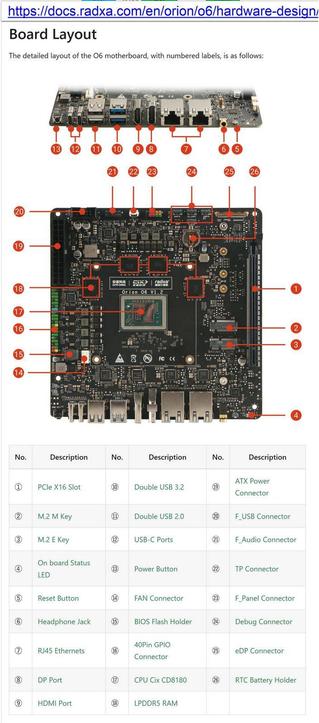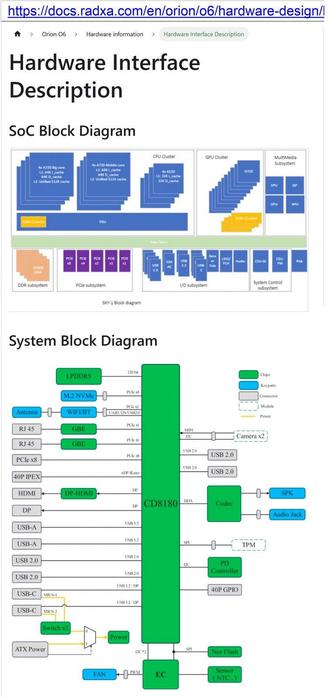The ARMv9 ISA, And What It Can Do For You
The number of distinct ARM Instruction Set Architectures (ISA) versions has slowly increased, with Arm adding a new version every few years. The oldest ISA version in common use today is ARMv6, with the ARMv6 ISA (ARM11) found in the original Raspberry Pi SBC and Raspberry Pi Zero (BCM2835). The ARMv6 ISA was introduced in 2002, followed by ARMv7 in 2005 (start of Cortex-A series) and ARMv8 in 2011. The latter was notable for adding 64-bit support.
With ARMv7 being the first of the Cortex cores, and ARMv8 adding 64-bit support in the form of AArch64, what notable features does ARMv9 bring to the table? As announced earlier this year, ARMv9's focus appears to be on adding a whole host of features that should improve vector processing (vector extensions, or SVE) as well as digital signal processing (DSP) and security, with its Confidential Compute Architecture (CCA).
In addition to this, ARMv9 also includes all of the features that were added with ARMv8.1, v8.2, v8.3 and so on. In essence, this makes an ARMv9-based processor theoretically capable of going toe-to-toe with the best that Intel and AMD have to offer.
Welcome to the High-End
It should be obvious that ARMv9 is not an ISA which we'll be seeing soon in budget single-board computers (SBCs) like the Raspberry Pi and kin. The BCM2711 SoC of the Raspberry Pi 4, for example, uses Cortex-A72 cores, which implement the ARMv8-A specification. Since then, the ARMv8.1-A update added:
- Additional instructions for atomic read/write and more.
- Improved virtualization support (e.g. Virtualization Host Extensions).
- SIMD (vector) extensions.
In 2016, ARMv8.2-A added:
- Additional instructions for a variety of of tasks like half-precision floating point data processing.
- Scalable Vector Extensions (SVE): SIMD processing.
Followed later that year by ARMv8.3-A:
- Nested virtualization.
- Advanced SIMD complex number support.
The next three updates added and refined more functionality, creating an impressive list of required and optional updates to the base ARMv-8 specification. Not surprisingly, this large number of ISA specifications is a bit messy, and one of the things that ARMv9 accomplishes is bringing all of these versions together in one specification.
Another thing which ARMv9 adds over ARMv8 is Scalable Vector Extension version two (SVE2), the successor to SVE, and essentially the replacement of the NEON SIMD instructions. As Arm notes, the NEON instructions are still in ARMv9, but only for backwards compatibility. As the 'Scalable' part of SVE suggests, a major benefit of SVE over NEON is that it scales to the underlying hardware, allowing for even smaller, less powerful platforms to still handle the same SVE2-based code as a higher-end chip.
It's telling that SVE has its roots in HPC (high-performance computing), with the Japanese Fukagu supercomputer being one of the first systems to make use of it upon its introduction last year. This means that ARMv9's SVE2 will be very important for applications that process data which benefit from SIMD-based algorithms.
Realms and Tagged Memory
New in ARMv9 is the concept of 'realms', which can be considered as a kind of secure container in which code can execute without affecting the rest of the system. This works together with e.g. a hypervisor, with the latter handing a large part of the security-related operations to a new Realm Manager. The exact details of which aren't known at this point, beyond the information which Arm made available at its recent announcement.
Basic example of how CCA Realms can be used. (Credit: Arm)
Not new to v9, but available since v8.5 is Memory Tagging Extension (MTE). Memory tagging is a mechanism to track illegal memory operations on a hardware level. This is similar to what Valgrind's Memcheck tool does when it keeps track of memory accesses in order to detect buffer overflows and out of bounds writes and reads, except with MTE this is supported on a hardware level.
Having these features in the ARMv9 specification means that upcoming ARM processors and SoCs are likely to offer virtualization and security options that make them interesting for data centers and other applications were virtualization and security are essential.
Stay Tuned
Just a few days ago, Arm revealed the first two CPU cores which are based on the ARMv9 specification. These Neoverse V1 ("Zeus") and N2 ("Perseus") cores. Both of these are targeting data centers and HPC applications, with Amazon AWS, Tencent, Oracle, and other cloud providers likely to use them.
The low-down is that for in the near term, ARMv9 is something that the average consumer will have little if anything to do with as there's not much incentive for many platforms to change even from baseline ARMv8-A to ARMv6-A. The need to license new cores and new IP is of course another factor here. All of this means that for the coming years, it's not likely that we'll see ARMv9-based silicon appear in mobile devices or new single-board computers. (Sounds kind of like a challenge for Hackaday readers, doesn't it?)
That is not to say that it isn't an interesting development, especially once ARMv9 with SVE2 and CCA ultimately do appear on those platforms. With massively improved SIMD performance -- for example -- many data processing and encoding tasks will suddenly become a lot faster, which could be a boon for anyone who wishes to daily drive an ARM-based system.
The ARM Ecosystem Today
As alluded to in the beginning of this article, the ARM ecosystem is relatively fragmented at this point, especially when one considers the highly popular Raspberry Pi boards and their simultaneous, continued use of ARMv6, ARMv7, and ARMv8, with middling support for AArch64 on the latter. Although it has its benefits to be able to use the backwards compatibility in ARMv8 and v7 for running ARMv6 ('armhf') binaries, it also removes a large part of the benefits of moving to these newer ISAs.
With 32-bit support in the world of Intel and AMD already firmly a thing of the past, it does seem rather quaint to hang on to 32-bit-only ARM ISAs, especially when simultaneously proclaiming the capabilities of these systems as a potential daily driver. Even just the 4 GB system memory and per-process memory limitations that come with a 32-bit architecture are sufficient to ruin a lot of potential fun there.
How long will it take before ARMv6 and ARMv7 will join ARMv5 into retirement? That's not an easy question to answer at this point, even though the answer will likely play a major role in the answer to the question of how long it will likely take for ARMv9 to start playing a pertinent role outside of data centers.
A Note on MCUs
Amidst all this talk about server chips and SoCs, it's sometimes easy to forget that ARM-based microcontrollers also use ISAs related to the Application profile ISAs. These -M (Microcontroller) post-fixed specifications have been updated over the years as well, with the Cortex-M55 using the ARMv8.1-M instruction set. This ISA adds the Helium vector processing extensions, adding significant SIMD capabilities to MCUs.
While the Application profile of ARMv9 won't directly translate to the Microcontroller profiles in a feature-for-feature manner, any features which do make sense for an MCU platform are very likely to be translated to the latter in some fashion. Virtualization features for one do make little sense, but memory tagging as in MTE and further debug and monitoring features could be desirable.
When the first MCUs based on the Cortex-M55 appear over the coming years, this should give us a glimpse of what ARMv9 may bring in this area as well. Whether we will be programming those MCUs from ARM-based desktop systems by then is however still up in the air.
#arm #engineering #featured #hardware #microcontrollers #armv9 #sve2




